japanese beetle life cycle iowa
Adult female beetles lay eggs in the soil in early June. Japanese beetle eggs hatch during midsummer.

Japanese Beetles Emerging In Southern Iowa Integrated Crop Management
Observing Japanese beetles feeding on plants is quite common since the adult beetle feeds on about 300 species of trees shrubs ornamental and fruit trees in addition to vegetable crops.

. Adult Japanese beetles feed on and damage some field crops ornamental plants shrubs and garden plants. Its not easy to spot the Japanese beetle at first. Females lay eggs in soil that hatch within seven to 14 days and grubs begin feeding on grass roots.
During the feeding period females intermittently leave plants burrow about 3 inches into the ground and lay a few eggs. Grubs cease feeding in October and overwinter 15 cm below the soil surface Figure 3. Some of the most common trees to suffer dieback from the Japanese Beetle in Des Moines Iowa are the River birch Betula nigra Paper birch Betula papyrifera Linden or American basswood Tilia americana and fruit trees.
Here are the stages in the lifecycle of a Japanese beetle. A set of dark strong mandibles is present on the top of its head. The grub is a creamy white with a yellowish-brown head.
The Japanese beetle occurs in all states east ofthe Mississippi River with sporadic infestations reported in California Iowa Missouri and Nebraska. This cycle is repeated until the female lays 40 to 60 eggs. As this insect moves into other areas its important to understand their life cycle the damage they cause and options for managing them.
The egg larva and pupa life cycle stages develop underground and unless soil is removed or dug into these life stages will not be seen. Appearance of adult the timing of oviposition and subsequent development have been shown to vary with latitude altitude and also from year to year Fleming 1972. While the adult life cycle of the Japanese Beetle is over at the end of the growing season it is always a good time to look ahead.
Late-planted fields are at greater risk. In most parts of its range the Japanese beetle completes its life-cycle in one year but some populations in cooler climates may complete their development in two years Vittum 1986. An individual Japanese beetle lifespan is about 30 to 45 days.
Most damage is from adult feeding. Japanese beetle have one generation per year Figure 2. Japanese beetle life cycle.
By midsummer the eggs hatch and the young grubs begin to feed. When resting the larva is C-shaped. The host range of this insect is very large over 300 species of plants.
However the larval grub also can feed on roots. After the egg hatches in summer the grub feeds on roots until the following summer when it emerges as a shiny beetle. During a two- to three-week period female beetles repeatedly tunnel a few inches into the ground and lay up to 60 eggs each.
Its body consists of 13 segments 10 on the abdomen and 3 on their thorax. The immature larvae or grubs stay close to the soils surface and feed on grass roots. Life Cycle Japanese beetles have one generation per year in Iowa Fig.
Thats because much of its life cycle takes place underground. It appears translucent and its body has brown setae and short spines all over. 3 Areas of healthy sunny well-irrigated and well-maintained lawn grasses are prime targets.
They overwinter deep in the soil and resurface again in spring when soil temperatures rise to feed for another 3 to 4 weeks before emerging as adult Japanese beetles. Adults begin to emerge in May and feed on foliage through September. Japanese beetles are often found in field edges or areas of delayed growth.
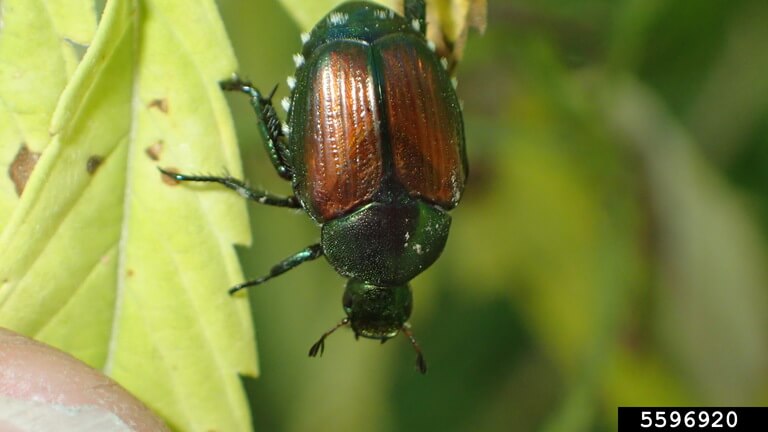
Japanese Beetle Soybean Pest Soybean Research Information Network Srin

Japanese Beetles Popillia Japonica Eating A Physalis Leaf Iowa Usa Stock Photo Alamy

The Japanese Beetle Has Reached Its Peak Population In Places Across Iowa While Some Areas Of The State Have Not Seen The Bee Japanese Beetles Beetle Japanese

Japanese Beetles Expanding Range In Iowa Integrated Crop Management
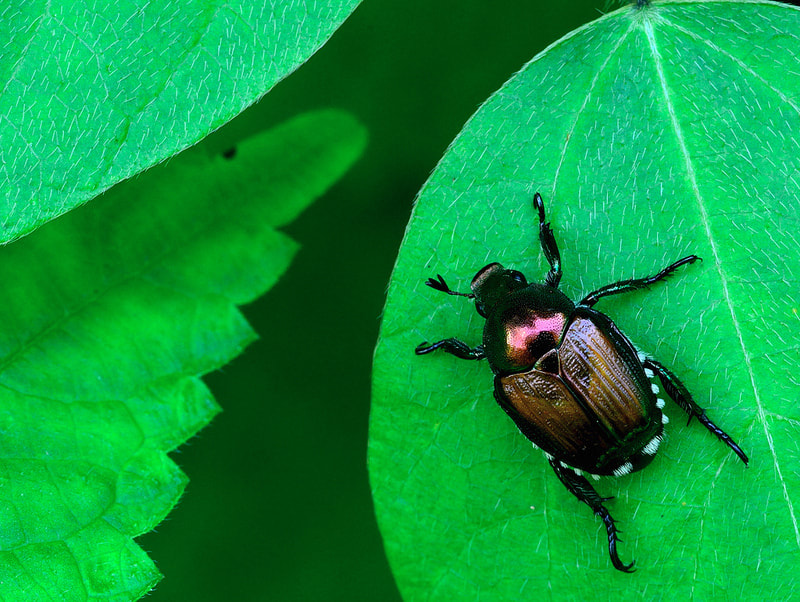
Japanese Beetles The Garden Website Com

Bioluminescent Bugs Predatory Glow Worms Discovered In Rainforest Webecoist Incredible Creatures Glow Worm Glow In The Dark
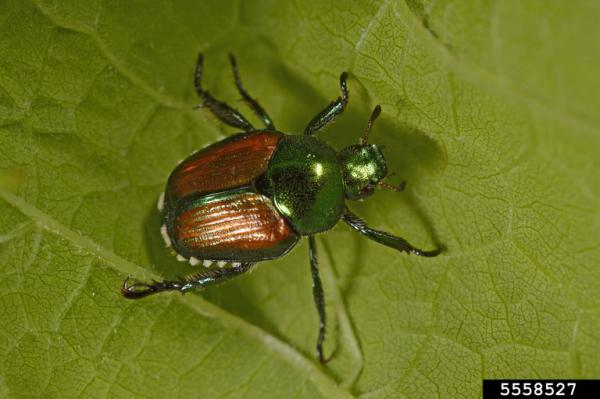
Japanese Beetle National Invasive Species Information Center

Japanese Beetles Meadows Farms
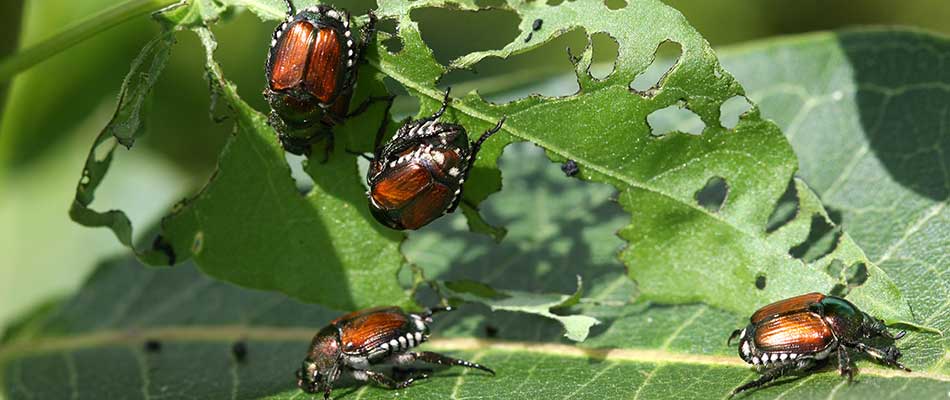
Japanese Beetle Control In Des Moines West Des Moines Ankeny Ia A Lawn Landscape

Formosan Subterranean Termite Swarmer Note All Four Wings Are Equal In Length Termite Control Termites Wood Termites
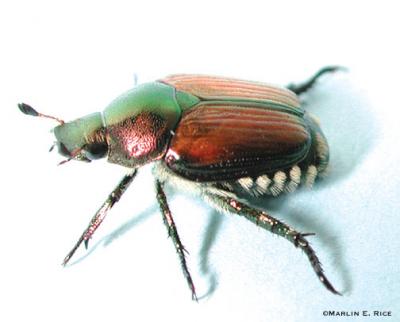
Japanese Beetle In Corn And Soybean Integrated Crop Management

Japanese Beetles Begin Emergence Integrated Crop Management

Signs Of Japanese Beetle Infestations Shades Of Green Lawn Landscape

Japanese Beetle In Corn And Soybean Integrated Crop Management
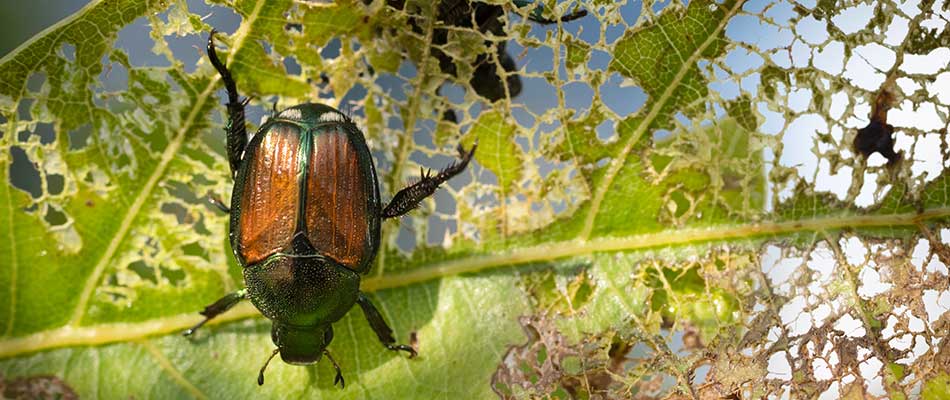
Japanese Beetle Control In Des Moines West Des Moines Ankeny Ia A Lawn Landscape

Japanese Beetle Look Alikes Including A Six Spotted Tiger Beetle Download Scientific Diagram

How Many Japanese Beetles Will You See This Year Horticulture And Home Pest News

State Quarantine To Remain In Bid To Limit Spread Of Japanese Beetles News Gjsentinel Com
